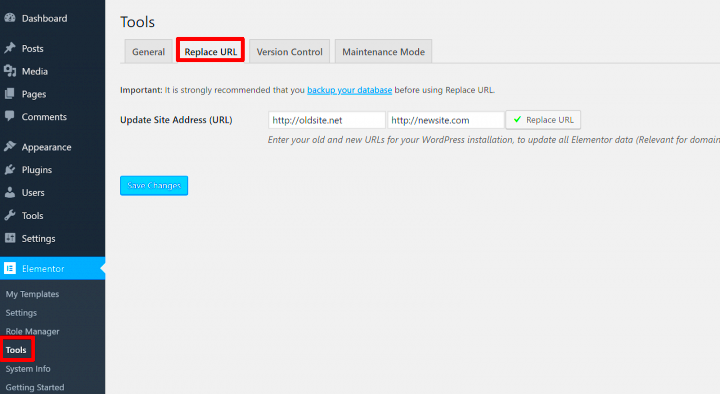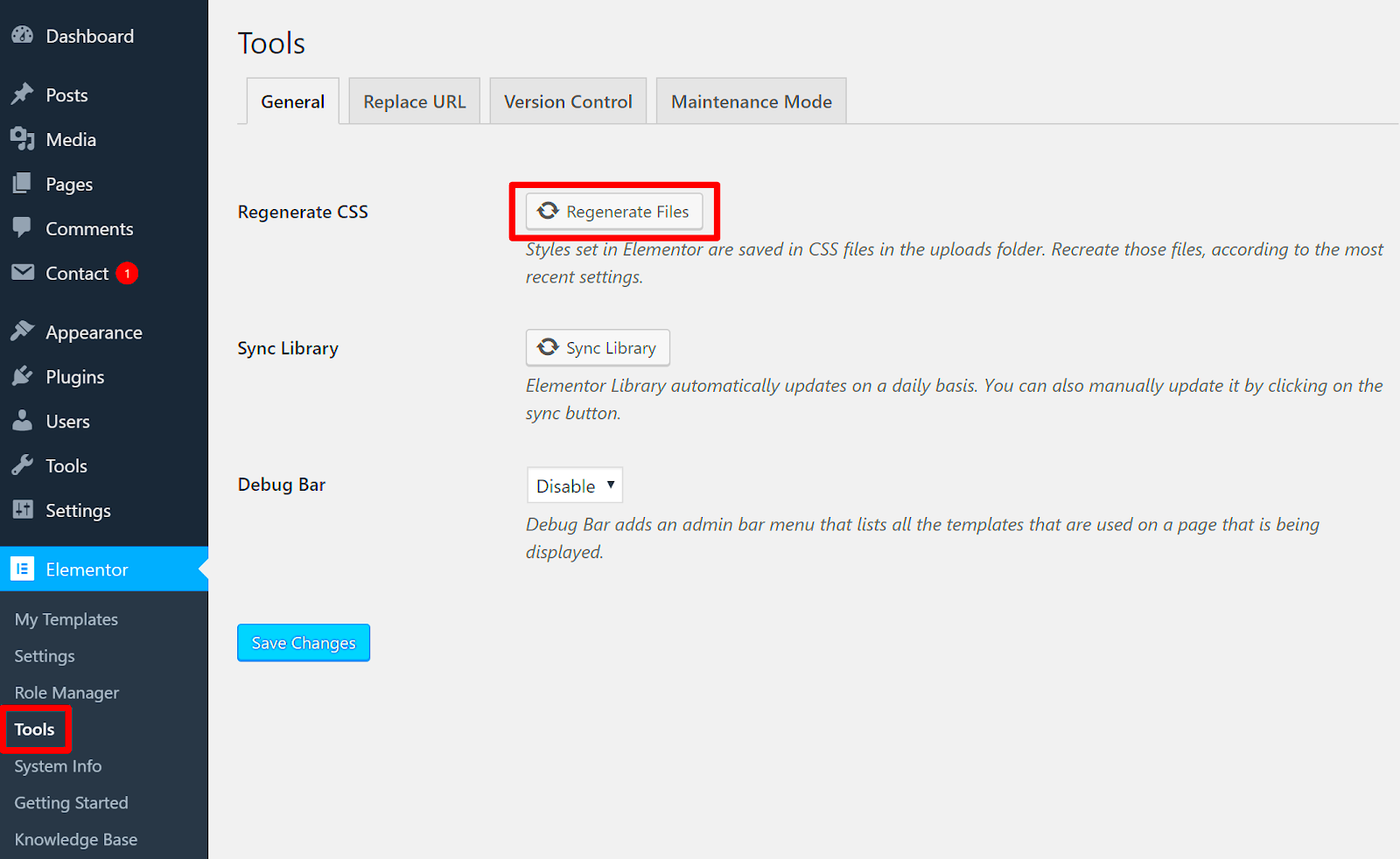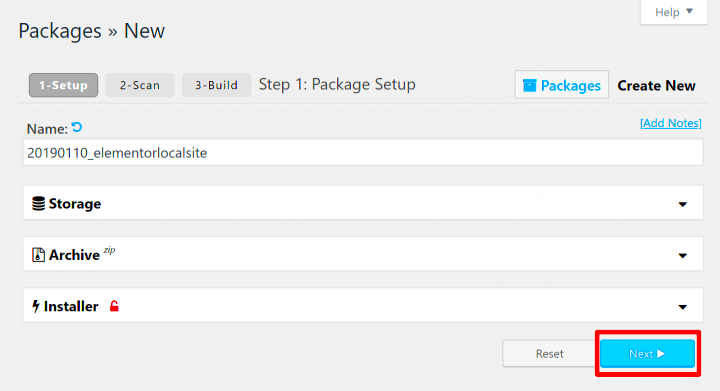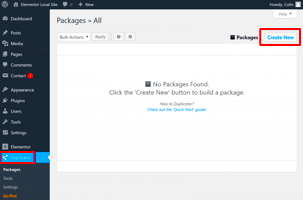Hey there! If you’re diving into the world of website building, you’ve probably come across Elementor, a fantastic page builder for WordPress. But did you know that migrating your site from Elementor to WordPress can come with some incredible benefits? In this guide, we’ll explore what
Why Migrate from Elementor to WordPress?

Migrating from Elementor to a more generalized WordPress setup may seem like a daunting task, but it might be exactly what your site needs. Here are some compelling reasons to consider this shift:
- Improved Performance: Moving away from a page builder like Elementor can reduce the number of plugins and scripts loaded, leading to faster page load times.
- Better SEO: Websites that are lightweight tend to perform better in search engine rankings, and simplifying your site can enhance your SEO efforts.
- Enhanced Customization: WordPress themes often offer more customization options without the need for additional plugins, giving you greater flexibility.
- Stability and Support: A straight WordPress setup may provide better support, as fewer plugins mean less compatibility issues and conflicts.
- Future-Proofing: As Elementor evolves, there may be increasing complexities and potential limitations. Migrating ensures you’re not tied down to one specific builder.
Migrating doesn’t mean abandoning your hard work; it’s about enhancing your website’s performance and user experience. We’ll delve deeper into best practices for a smooth migration in the sections to come!
Preparing for Your Migration

Before diving headfirst into the migration process, it’s crucial to lay the groundwork. Think of this stage as packing your bags before a big trip; you wouldn’t want to forget any essentials, right? The same goes for migrating your Elementor site to WordPress.
Here’s a checklist to help you prepare:
- Backup Your Current Site: Always back up your website, including both files and the database. This ensures that you have a restore point if something goes awry during the migration process.
- Update Everything: Make sure all themes, plugins, and WordPress itself is updated to their latest versions. This reduces compatibility issues and exploits.
- Audit Plugins: Take stock of all the plugins currently used. Document them as you’ll need to reinstall or check for compatibility on your new WordPress installation.
- Assess Content: Think about what’s absolutely necessary to migrate. Do you really need those old blog posts from five years ago? Perhaps a cleanup is in order!
- Choose a Suitable Hosting Provider: If you’re migrating to a new host, research and select the best hosting provider that meets your site’s requirements.
- Document Your Site Structure: Take notes or create a diagram that illustrates your site’s structure, including pages, posts, and any custom post types. This will help you replicate or improve your structure in the new setup.
Preparation is the key to a smooth migration. Take your time to complete these tasks; it will save you a lot of headaches down the line!
Step-by-Step Guide to Migrating Elementor to WordPress

Now that you’re all prepped, let’s walk through a simple yet effective guide for migrating Elementor to WordPress. Following these steps will help ensure that your website migrates seamlessly without losing any of that fabulous design work!
- Export Your Elementor Templates: Head over to your Elementor dashboard and navigate to “Templates.” Export the templates you want to keep. This can be done by selecting the template and then clicking on the “Export” option.
- Install WordPress: Set up your new WordPress environment. If you’re switching hosts, make sure WordPress is installed. Most hosts offer a simple one-click installation.
- Install Necessary Plugins: Before importing your templates, install Elementor and any other necessary plugins that your site uses. Don’t forget to check for updates once they’re installed!
- Import Templates: Go back to the Elementor dashboard on your new WordPress site. Here, navigate to “Templates” and hit the “Import Templates” button. Upload the templates you exported earlier.
- Move Content: Depending on how you’ve structured your content, you may need to manually copy over posts, pages, and media from your old site. Tools like the WordPress Importer can help automate some of this process.
- Set Up Your Site Structure: Recreate the hierarchy noted during your preparation phase. Arrange your pages and posts so that they mirror your previous site structure as closely as possible.
- Test Everything: After migrating, thoroughly test your site. Check for broken links, missing images, and functionality of forms. This ensures that users will have a smooth experience when visiting.
- SEO Considerations: Don’t forget to update any SEO settings. Use plugins like Yoast SEO or All in One SEO to help maintain your rankings.
Congratulations! By following this guide, you should have a successfully migrated Elementor site on WordPress. The result? A beautifully functioning website that’s ready for visitors! Just remember, ongoing maintenance is key to keeping your site in tip-top shape.
Common Challenges During Migration
Migrating your site to WordPress using Elementor can be a breeze, but like any venture, it’s not without its bumps along the way. Understanding the common challenges you might face can save you time and stress down the road. Here are some of the most frequently encountered issues during migration:
- Data Loss: One of the biggest fears during any migration process is losing data. Whether it’s images, posts, or page layouts, the stakes can be high. Always back up your site before starting the migration!
- Compatibility Issues: Elementor and WordPress themes sometimes have compatibility quirks. You might find that certain features or designs don’t look the same post-migration. A little pre-migration research can prevent this headache.
- SEO Implications: Changes in URL structures or content organization can impact your SEO. Make sure to set up proper redirects to maintain your site’s visibility.
- Plugin Conflicts: After migrating, you may find that some plugins aren’t functioning as they used to. This could be due to version changes or conflicts with other plugins. Keeping an eye on plugin compatibility is crucial.
- Performance Issues: Sometimes, migrating your site may lead to slow loading times or poor performance. This could be related to server issues or unoptimized files being transferred.
Being aware of these challenges allows you to prepare effectively and make your migration process as smooth as possible.
Post-Migration Checklist
Congratulations! You’ve successfully migrated your website to WordPress with Elementor. But before you start celebrating, it’s essential to go through a comprehensive post-migration checklist to ensure everything is working seamlessly. Here’s your go-to guide:
- Review Your Site’s Functionality: Check every link, button, and form to make sure they work as intended. This helps identify any broken elements right away.
- Check for Missing Content: Go through your pages and posts to confirm that no content has gone missing during the migration.
- Test Across Browsers and Devices: Always test how your site looks and works on various browsers and mobile devices. This ensures it’s user-friendly across platforms.
- Inspect SEO Settings: Make sure your SEO settings are intact (meta titles, descriptions, etc.). A plugin like Yoast can help you quickly review this.
- Check Analytics and Tracking Codes: Make sure your analytics tools are still collecting data post-migration. It’s crucial for tracking your site’s performance.
- Update Internal Links: If your URL structure changed, update all internal links to avoid 404 errors.
- Optimize Site Speed: Run performance tests to identify any bottlenecks or areas for improvement in speed.
Checklist complete? Great! Taking the time to ensure everything’s running smoothly will provide you peace of mind as you dive into the exciting world of WordPress with Elementor.
7. Best Practices for a Smooth Transition
When migrating your Elementor designs to WordPress, a seamless transition is key to maintaining your website’s integrity and performance. Here are some best practices to ensure everything goes smoothly during the migration process:
- Backup Everything: This is non-negotiable! Always create full backups of your WordPress site, including your database and all files. Use a reliable backup plugin or your hosting service’s backup solution to safeguard your content.
- Check Plugin Compatibility: Before migrating, ensure that your current Elementor version and any add-ons you’re using are compatible with the WordPress version you plan to use. This helps avoid potential issues post-migration.
- Staging Environment: Set up a staging site for the migration process. This allows you to test everything without affecting your live site, giving you the chance to catch any errors or layout issues before going public.
- Update Everything: Make sure WordPress, Elementor, and all your plugins are up-to-date. An outdated plugin can lead to conflicts that might complicate the migration.
- Minimize Custom Code: If your site uses custom code (like CSS or JavaScript), document it or back it up separately. Custom code may need to be re-implemented post-migration.
- SEO Considerations: Keep your existing SEO settings in mind. Redirects, meta tags, and structured data should be preserved to maintain your search rankings.
- Testing Post-Migration: After migrating, thoroughly test your site. Check all links, forms, and interactive elements to ensure everything functions as expected.
By following these best practices, you can help ensure a smooth transition that minimizes disruptions to your website and keeps your visitors happy!
8. FAQs About Elementor Migration
Migrating your Elementor content can raise many questions. Here are some frequently asked questions to help clarify any uncertainties you might have:
| Question | Answer |
|---|---|
| Can I migrate my site without downtime? | Yes! By using a staging site for migration, you can ensure your live site remains unaffected while you work on updates. |
| Will I lose my custom CSS or JavaScript during the migration? | If you backup and document your custom code, you can easily reapply it after the migration. |
| What if an error occurs during migration? | Having a backup allows you to revert to your previous version quickly and troubleshoot the issue without pressure. |
| Do I need to reinstall plugins after migration? | It depends. If you’re using the same WordPress environment, most plugins should work without needing reinstallation. But always check for compatibility. |
| Will my SEO be affected after migration? | If done correctly, your SEO rankings and settings shouldn’t be adversely affected. Just ensure that redirects and other SEO settings are in place. |
Hopefully, these FAQs take some of the uncertainty out of your Elementor migration journey. Remember, preparation and careful planning are key to a successful transition!
Conclusion and Final Thoughts
In summary, migrating your Elementor site to WordPress can be a seamless process if approached with the right strategies and best practices. It is essential to prepare adequately to ensure a smooth transition while preserving your design and functionality. Here are some key takeaways:
- Planning: Take the time to plan your migration, including setting clear objectives and timelines.
- Backup Your Site: Always create a full backup before starting any migration process to avoid data loss.
- Check Compatibility: Ensure that your plugins, themes, and other components are compatible with the new environment.
- Optimize Performance: After migration, conduct performance tests to guarantee that your site runs efficiently.
- SEO Considerations: Pay attention to SEO factors to maintain your rankings during and after the migration.
Following these best practices will not only streamline the Elementor migration process but also enhance your website’s overall performance. Additionally, consulting the relevant documentation, whether from Elementor or WordPress, can provide further insights into specific features or issues you might encounter during the migration. With the right preparations and careful execution, your Elementor website will thrive on WordPress, providing you with greater flexibility and opportunity for growth.


